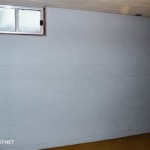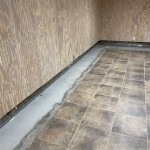Paint for Concrete Basement Walls: Essential Aspects to Consider
Transforming your concrete basement walls with paint can elevate their aesthetics and protect them from moisture and stains. Choosing the right paint for this specific surface requires careful consideration. This comprehensive guide will delve into the essential aspects you need to know to achieve a successful paint job on concrete basement walls.
1. Surface Preparation
Before applying paint, it's crucial to prepare the concrete surface thoroughly. This involves removing any dirt, dust, grease, or other contaminants. Use a wire brush or power washer to clean the surface and a de-greaser specifically formulated for concrete. Allow the surface to dry completely before proceeding.
2. Selecting the Right Paint
Epoxy and acrylic latex paints are commonly used for concrete basement walls. Epoxy paints offer excellent adhesion, durability, and resistance to moisture and chemicals. Acrylic latex paints are water-based, making them easier to apply and clean up. Choose a paint with a finish that suits your desired appearance, such as flat, satin, or semi-gloss.
3. Moisture Control
Moisture is a common issue in basements, so it's essential to address any moisture problems before painting. Waterproof the walls if necessary and ensure proper drainage and ventilation. If you notice any water stains or efflorescence, treat the area with a waterproofing solution before painting.
4. Primer
Using a concrete primer before painting is highly recommended. It helps improve adhesion, reduces paint absorption, and prevents stains from bleeding through. Choose a primer specifically designed for concrete surfaces and apply it evenly.
5. Application
Apply the paint using a brush, roller, or spray gun. For best results, apply two to three thin coats, allowing each coat to dry completely before applying the next. Use smooth, even strokes and avoid over-brushing the paint.
6. Maintenance
Once painted, concrete basement walls require minimal maintenance. Regularly check the walls for any moisture or damage and clean them with a mild detergent and water solution. If you notice any peeling or chipping, touch up the area as needed.
Additional Tips
* Use a respirator when applying paint and primer in enclosed spaces. * Allow ample time for ventilation during the drying process. * Consider using a paint additive to enhance the paint's durability and resistance to moisture. * Test the paint on a small area first to ensure color and adherence. * If you encounter any difficulties or have concerns, consult with a professional painter or the manufacturer of the paint.
Reasons To Avoid Painting Your Basement Walls The Crack Guys

Best Paint For Concrete Walls In A Basement

Painting Cinder Block Walls In A Basement Or Re Paint Them
:strip_icc()/102522989-0a65e22401704c578a80668b4f86a695.jpg?strip=all)
How To Paint Basement Walls

How To Paint Concrete Basement Floors Yourself Building Bluebird
Best Basement Wall Paint On 100 Year Old Cinderblocks Diy Home Improvement Forum

3 Ways To Paint Your Basement Walls Wikihow

Pin Page

How To Paint A Concrete Floor In Basement Twofeetfirst

Awesome Unfinished Basement Before And After Building Bluebird
Related Posts







